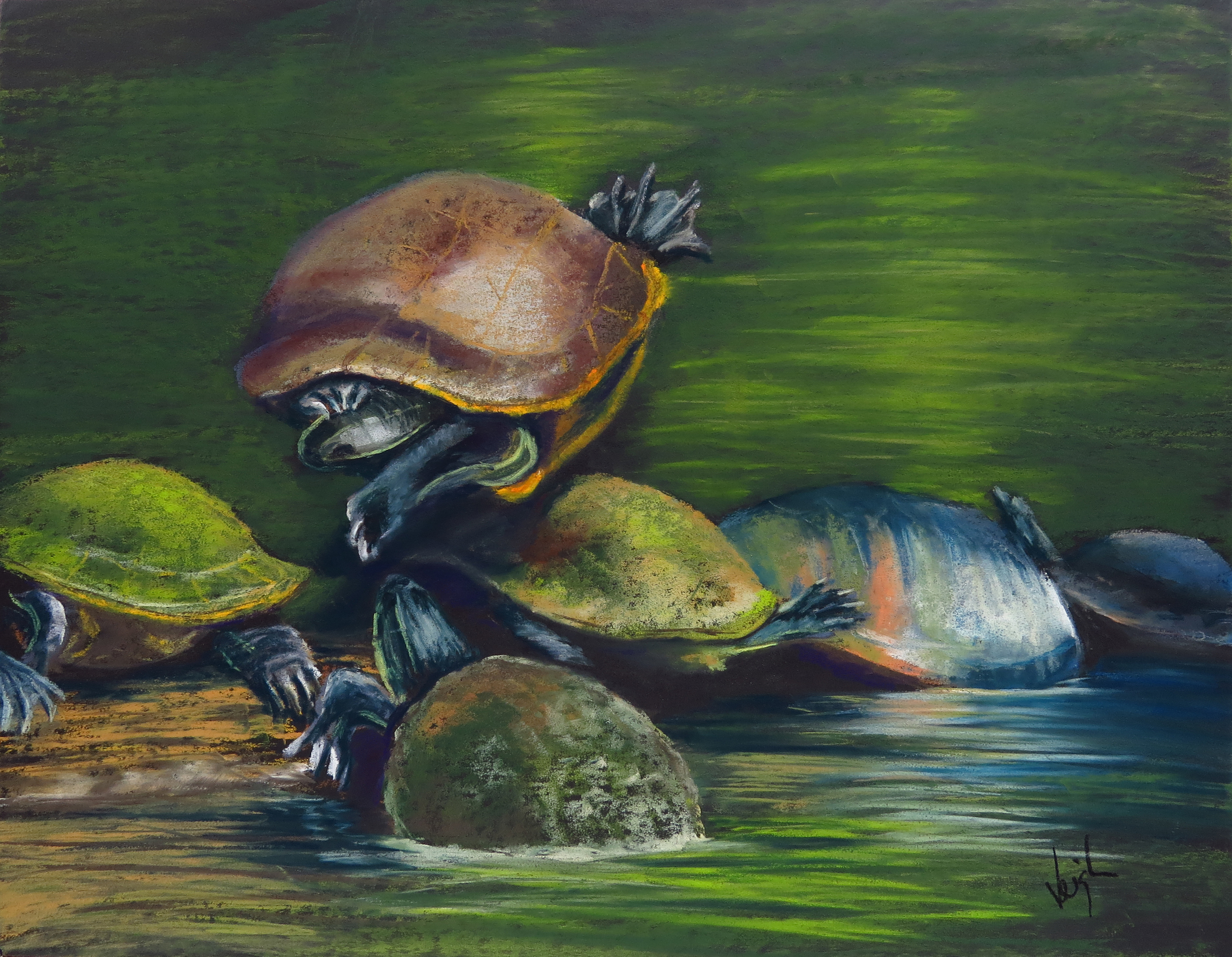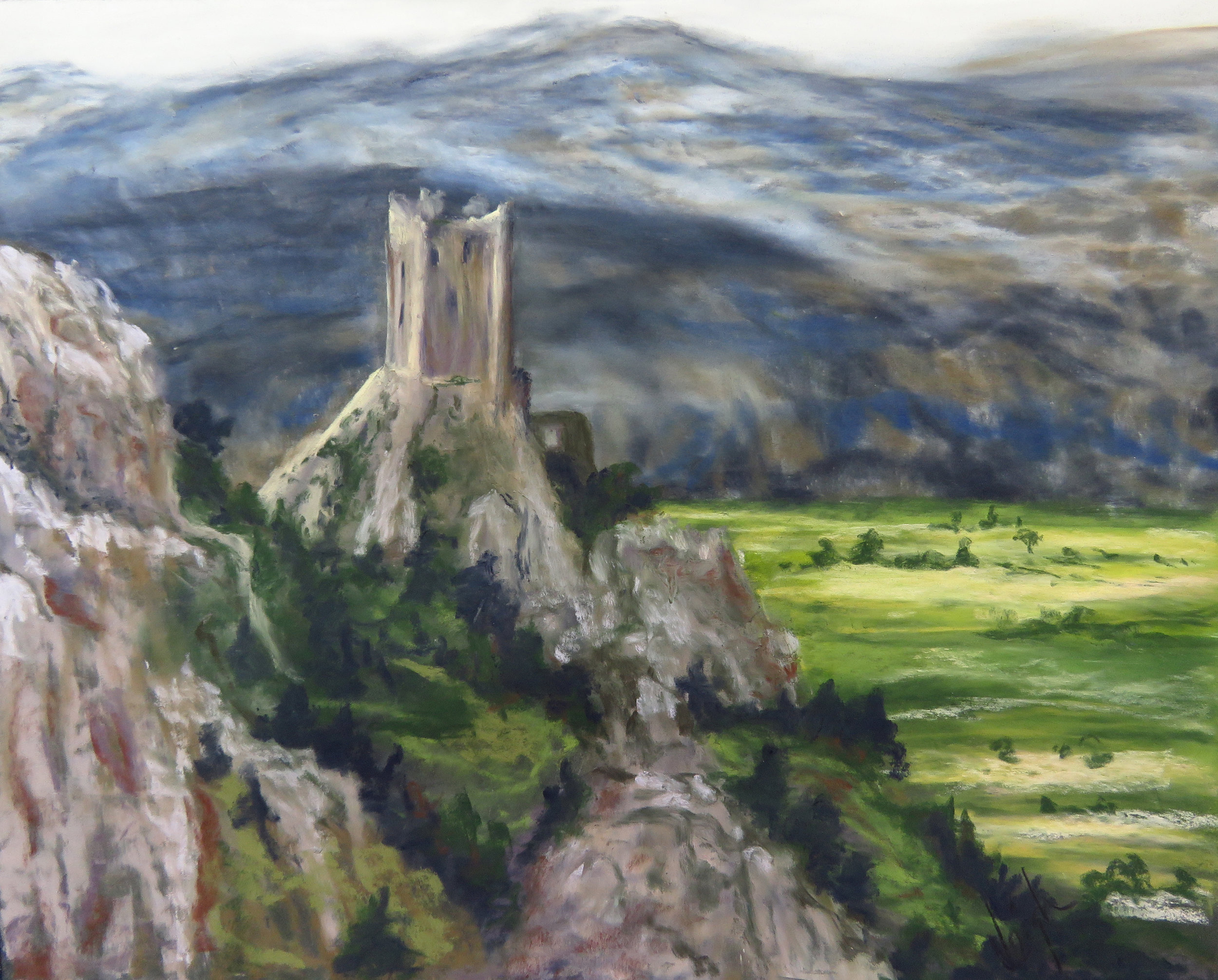Pastels are part of that crossover between drawing and painting. Usually, I am directly applying the pastel to the surface without the need of brush, or knife or other tool, but I have the option of using a variety of tools in application and manipulation. In monochrome, the techniques and results can be comparable to charcoal drawings, but through color I can choose to layer and blend colors with a complexity similar to oil or acrylic. Because pastels are nearly pure pigment, they can be used in a variety of mixed media possibilities. They are a wonderful tool for quick color studies, or they can be developed into a fully finished studio work.
They are also a very delicate medium. While their lightfastness rivals any other traditional media, and they are highly archival due to the absence of a medium that can chemically change with time, they can be easily damaged.
Work can be easily smudged and rough handling can knock particles off the surface. Fixatives can slightly reduce this hazard, but can often dramatically change some colors in the image and reduce the archival properties of a pastel painting. When framed under glass and treated with reasonable care, pastel paintings can stay as fresh and beautiful as any other painting.
Each medium has its own challenges and advantages. I love the challenge and immediacy of working with pastels. I often enjoy creating similar images in pastels that I have done in other media such as oil just to explore the differences in techniques and results.







